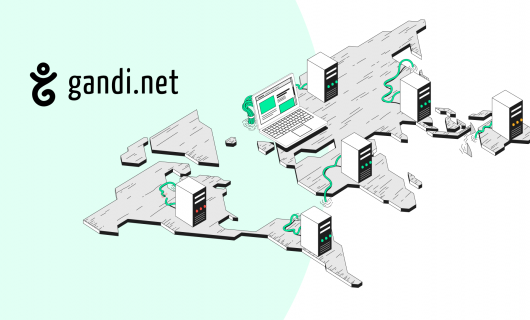Some domain names are valuable in and of themselves — they contain high-value keywords or are otherwise highly valuable. That’s all well and good but this post is about domain name value that’s intrinsic to domain names in general — what you can use it for.
We’ve compiled the top 5 ways that you can use a domain name to get the most out of your domain name value.
1. Create a website
The classic use case for a domain name is using it as the address of your website. It’s by far the number one use for a domain name and being able to use it for creating a website is what gives a domain name its value, primarily.
Far from being an end in itself, using your domain name to create a website actually opens more options and choices for what you can do with your domain name.
Broadly speaking, you can create a website (and by extension use your domain) for a personal website or for a website for your business.
Create a personal website
Create a blog
There are a few different types of personal website, but probably the most common type is a blog. A blog is a type of online journal or news site that lets you dynamically post updates. You could use it to document your travels in image or text, to periodically write your free-form thoughts about something you’re interested in or an area of expertise, periodically post product reviews, or create listicles. If you want to regularly update your website with fresh, new content in the form of posts or articles, a blog is for you.
By far the most popular blogging platform in the world is WordPress. It also happens to be free! All you need is a domain name and hosting to get your blog up and running with WordPress. And you can do it all in just a few easy clicks at Gandi.
Learn how to have a blog up and running in less than 15 minutes at Gandi
Other blogging platforms like Joomla exist, and there are also blogging platforms like Medium that you can link to your domain name using web forwarding.
Create a “nameplate” site
Another type of personal website you can make is one that has static content that you’d like to be able to easily communicate to people by just providing them with your domain name. This type of website is sometimes called a “nameplate” website, because it acts as a kind of virtual nameplate.
These websites could be used for various purposes. They could serve as a kind of virtual business card, that displays your contact information and a short blurb about you, as well as a professional photo. That way, you can easily communicate to business partners, potential employers, prospective customers, or others in your professional network how they can reach you and what you’re all about.
Similarly, your “nameplate” website might include a copy of your résumé or CV, or, especially if you’re an artist or a creative professional of some kind, your professional portfolio, whether that’s video, audio, poetry, or prose.
Create a business website
On the other hand, you could create a website for your business. First of all, you could very well create a blog for your business. This would be similar to the blog description we included above, but would be more focused on your business. That might mean you use your blog to advertise sales and promotions, or provide value to your customers and prospective customers by writing about your products or services.
There are a couple of other business-specific website types as well, though.
Create an e-commerce website
E-commerce is selling products and services online rather than in person, and while online sales have been steadily growing as a proportion of retail sales since the dawn of the internet, e-commerce sales volume shot up from 11.4% of retail sales in Q1 2020 to 15.7% in Q2 2020 before leveling off to 13.3% in Q2 2021 (source: https://www.statista.com/statistics/187439/share-of-e-commerce-sales-in-total-us-retail-sales-in-2010/ ).
You can use your domain name to get on board with this trend and catch up with customers who are increasingly looking online to shop with an e-commerce website.
At it’s most basic, an e-commerce website provides a catalog of products, usually with images and descriptions, that let users select products, add to a virtual shopping cart, and pay with a credit card or a payment system like PayPal when they “check out.”
Many e-commerce website platforms exist, but one of the most common which, like WordPress, is also free, is Prestashop.
Read more about how you can get your Prestashop e-commerce site up and running in no time
Create a showcase website
Even with e-commerce steadily trending upwards, nothing quite beats the experience of in-person retail, and so you might want to use your domain name to just advertise your brick-and-mortar shop rather than sell items directly online.
You might still want to have an image gallery showcasing your products, or some kind of catalog, but the main idea would be to give basic information about your business, including how to reach you, and something to entice customers to stop by.
Or, if you’re not in retail, you might just want a basic explanation of your services along with rates and a phone number or email address where you can be reached.
A quick note about security
Whenever your website has administrative areas you would log in to or requests sensitive data from its users (like credit card information from customers to complete transactions), you’ll need to secure connections to your website via HTTPS.
To do that, you’ll need an SSL (also called TLS) certificate for domain name. Luckily, when you purchase your domain name at Gandi, you get the first year of your SSL/TLS certificate for free.
What’s more, if you host your website using Gandi’s Simple Hosting, you get your SSL/TLS certificate for free in perpetuity, and it’s automatically installed on your site.
SSL or TLS allows your website’s visitors to trust your website, and so having an SSL/TLS certificate is key to maximizing your domain name value.
Read more about SSL certificates at Gandi
2. Create custom email addresses
The second most common use of a domain name after using it to build a website is using it to host custom email addresses.
When your email address actually ends with your domain name, it not only advertises your website, but it adds a level of professionalism to your email.
There are two ways you can use your domain name to create professional email: by hosting your own email accounts or by forwarding email addresses to your pre-existing, generic email address.
Create your own email account
An email account using a custom email address on your domain name enables you to create professional, branded communications and manage them separately from your personal email address.
The most common custom email addresses are ones using first names or first and last names, in either of these two formats:
- firstname.lastname@example.com
- firstname@example.com
There are other options, though, which are more generic, like admin@ and webmaster@. For businesses, you might also have custom email addresses like sales@, or management@.
At Gandi, every domain name comes with two free email addresses. Each of these in turn comes with 3 GB of storage for your emails. Beyond your two free email address and 3 GB, you can upgrade to premium email addresses.
Read more about how to create email accounts at Gandi
Forward emails to a custom email address
Your other option is forward all email to your custom email addresses to your pre-existing generic email address. By generic email address, we mean Gmail, Hotmail, Yahoo mail, etc.
At Gandi, every domain name comes with unlimited email forwarding, meaning you can make an unlimited number of email addresses that forward to a single email address, each to a different email address, or anywhere in between.
Read more about how to create email forwarding addresses at Gandi
3. Use your domain name for Cloud services
When people talk about “the cloud” or “Cloud services,” they’re talking about the idea of having software and data hosted remotely rather than locally. While the benefits of this arrangement were not immediately evident when “Cloud” services first hit the scene, in recent years, the value in this arrangement has become evident to most.
Specifically, Cloud services enable you to more easily work collaboratively across multiple locations, to share files quickly and easily between your own devices or with others, to store backups of your files or entire disks, and more.
You can attach your domain name to common cloud services like Dropbox, Google Drive, and iCloud, but we recommend using the open source alternative Nextcloud.
In fact, you can install Nextcloud on your Gandi Simple Hosting instance in just a few clicks.
4. Use your domain as a link shortener
You’ve probably seen URL shorteners used before. Some common ones are bit.ly and TinyURL. Even Twitter has its own link shortener using t.co.
Using a link shortener to communicate URLs — especially long, complicated ones — takes advantage of a primary domain name value: its ability to make long, complicated, hard-to-remember information and condense it into something short and easy to remember.
There are two options for using your domain name as a link shortener:
- Install a software link shortener on your hosting: For this, you can find link shortener apps that can be installed using any of the language and database combinations offered with Gandi Simple Hosting [ link to simple hosting page], or code your own! With this kind of link shortener, you can shorten long URLs down to short URLs like this: example.com/link-name
- Use forwarding addresses for link shorteners:
At Gandi, your domain name comes with free URL forwarding on subdomains of your domain name. That means you can create link.example.com, link-name.example.com, etc. What’s more, this URL forwarding can be secured using https — also for free.
Learn more about Gandi’s free https web forwarding
5. Use your domain name to forward to social media
Finally, while we’re on the topic of web forwarding, you can also use this service to forward your domain name to your social media accounts.
Even better, with unlimited https forwarding, you can set up your forwarding to create easy-to-remember links to your social media pages:
- facebook.example.com
- twitter.example.com
- linkedin.example.com
- youtube.example.com
That way, you don’t have to say “Look me up on Facebook,” you can just tell someone an easy-to-remember address they can use to find you.
Your domain name’s value
The value of your domain name doesn’t necessarily come from using high-value keywords or common words or phrases, but it comes just as much from the way that you use it.
A domain name is like a multi-tool, that brings together multiple potential uses into a single, easy-to-remember and easy-to-communicate name. Some of these tools require extra payment to add on. Overall, the more of them that come pre-packaged with your domain name, the easier it is to use any of them, increasing your overall domain name value.
More than any of these single uses, though, the overall purpose of a domain name is to connect — to an audience of readers, a set of prospective customers, or a group of users. Registering a domain name is the first step in making that connection, what you do with it is the rest.
Tagged in prestashopWordpress



